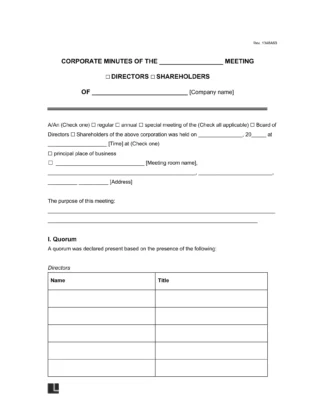
Use our Corporate Minutes template to record major activities and decisions taken by the company.

Updated September 21, 2023
Written by Yassin Qanbar | Reviewed by Brooke Davis
Corporate minutes are a written record that captures the critical decisions and actions taken during a meeting of the board of directors, shareholders, or other governing body of a corporation. Corporate minutes provide an official account of what was discussed, the decisions made, and any actions to be taken, serving as formal documentation for legal, regulatory, and operational purposes.
Despite being relatively straightforward, their construction and, most importantly, the formal detail they contain is the backup for every significant action your company takes.
Corporate minutes are the official legal record of your board’s discussions and decisions. They must include enough detail to demonstrate that a reasonable and responsible consideration of each decision took place, but not so much detail as to attract unwanted attention.
Board members should record formal corporate decisions via motions made and seconded.
They illustrate how and why the company acted and prove that it met the requirements of state law and corporate by-laws. They are, in essence, the formal life history of your company.
Corporate minutes are also known as:
Corporate minutes should be created for every formal board meeting. You should also prepare minutes of shareholder meetings, if applicable, and minutes for any significant committees your company uses.
These may include a compensation committee, an executive committee, and any committee that acts with the delegated authority of the board.
Minutes are lifetime records that show what a company was thinking and doing at any given time.
They can show a regulator or a shareholder why the board took or didn’t take any specific action at a given time. Use a corporate resolution to record any significant decisions.
Most states require corporate minutes during a corporation’s annual shareholder’s or director’s meeting, except for Delaware, Kansas, Nevada, North Dakota, and Oklahoma.
Writing corporate minutes looks deceptively easy. It’s a relatively rigid structure and a lot of boilerplate, so what can go wrong? A lot can go wrong. The secretary or other recorder can make mistakes.
The minutes may not demonstrate that a quorum was present, thus indicating whether anything the board did at that meeting was authorized.
Resolutions or motions may get omitted, or you may include too much detail about two board members conflicting rather than recording a vigorous discussion. Your tone should be formal but not incomprehensible legalese.
Having a structure or a template makes it easier to get your minutes right. Our corporate minutes template can serve as an outline and a prompt, ensuring you don’t leave anything out and always adopt the right tone.
You begin with the title. Who is the company? Is it the board or shareholders who are meeting? Is the meeting regular or special (or a written motion in lieu of a meeting)? Include the date and time and the location.
Explain briefly the purpose of the meeting. It may have a specific purpose, the annual meeting, or simply that regularly scheduled meeting.
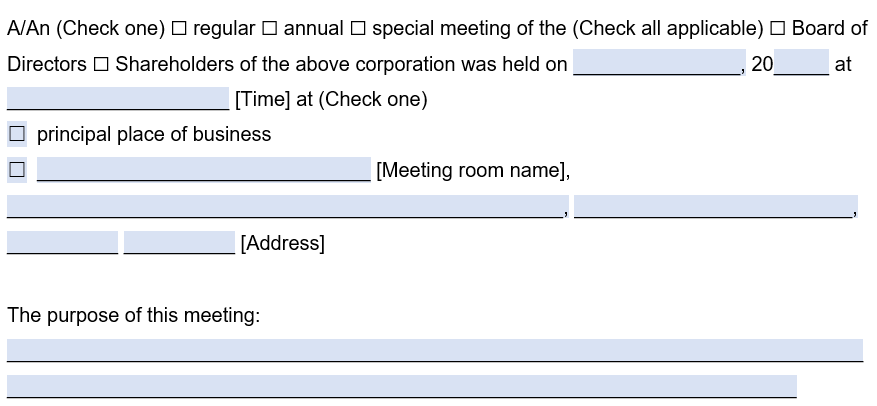
Many states’ laws and most corporate by-laws specify that a certain number or percentage of your board or shareholders must be present for a meeting to have the authority to act.
This is the second where you prove that you had one. You’ll list who attended (in person or virtually) and who wasn’t there. Include late arrivals as such with their time.
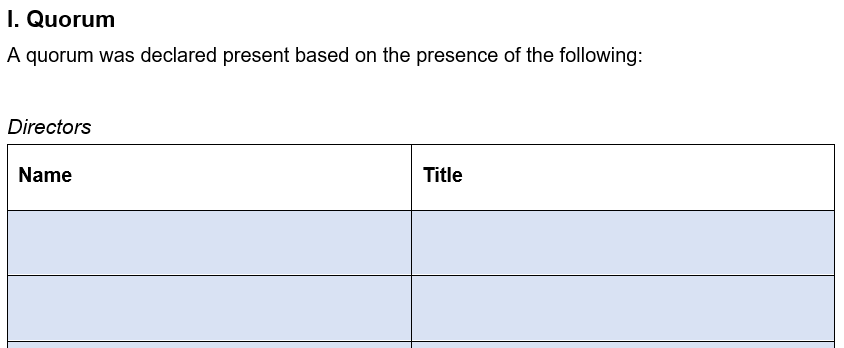
Most corporate boards have a chairperson whose title is usually a board chair. But, less formal committees where you want to maintain minutes but don’t have a standing chair should reflect the election or appointment of someone authorized to exercise the duties of chair of the board, likewise with a secretary.
Since the secretary makes the all-important minutes, that person’s appointment should be recorded. As with a Chair, most corporations have a standing secretary and don’t need to appoint someone.
Likewise, directors are elected for a specified period, not at every meeting. Record the election when it happens, and then worry about listing your quorum.
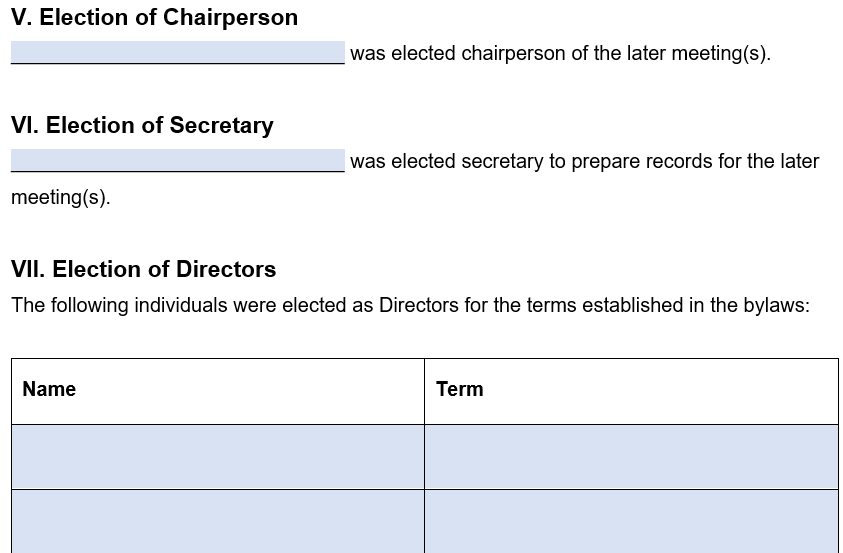
These officers are usually elected for a period to last until they quit or are terminated. Some corporate officers are, by law, required to be appointed every year. Make sure you know what your state requires for your kind of company.
If you’re a regulated company, you may have additional officer appointment rules to follow. Just be sure to document whatever you end up doing.
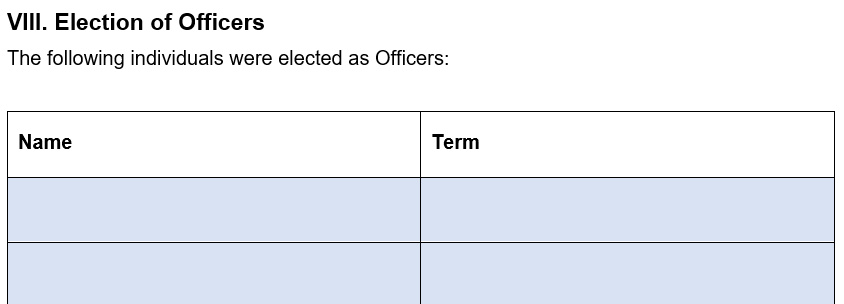
Many officers or departments report to the board at stated times or every meeting. Most of these will have a written report to submit to the board. Ensure that you, as secretary, get a copy to attach to the minutes.
The Board will want a motion made and adopted, accepting each report and approving it where necessary.
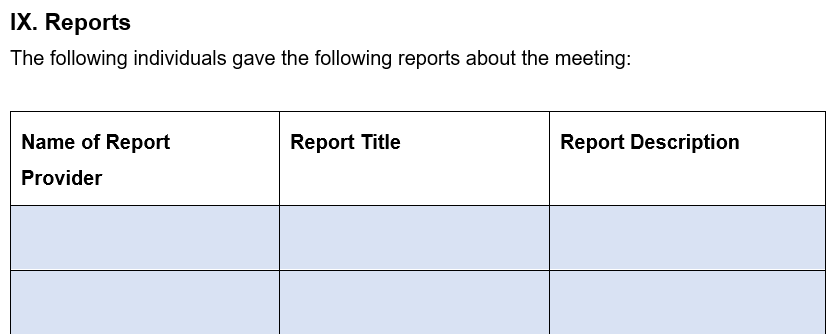
Some actions can be approved simply by referencing the agenda or outstanding items from the previous meeting. For others, you will want actual motions or resolutions.
Sometimes, it’s good to train your board members to provide you, as the secretary, with a complete copy of any motion to make it easier to record in minutes. You will want to record the substance of the motion, the moving board member, and the member who seconded. Following any discussion, vote and move on.
Repeat as necessary.
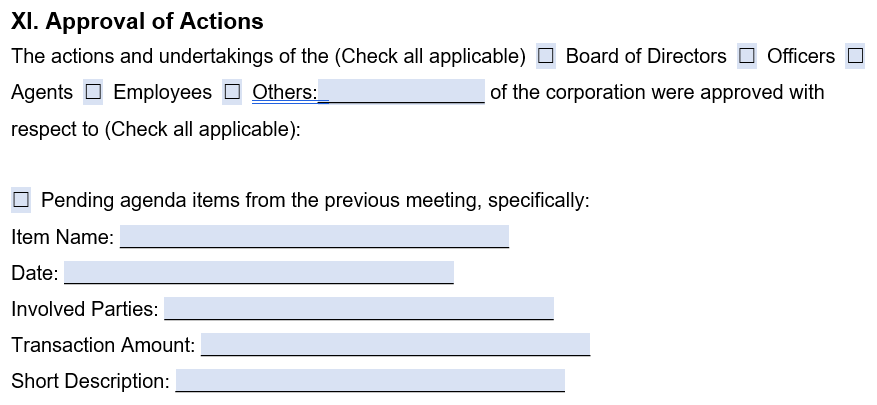
The board votes to do this if they need or want to issue more shares.
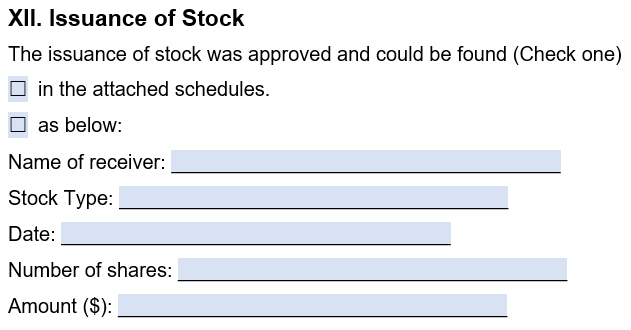
You then ensure that everything on the agenda is done and set the time and date for the next meeting.
You end the minutes by setting the time and place for the next meeting and then accepting a motion for adjournment.
You will then have signatures by, usually, the Chair and the Secretary after their review.

Below, you can see a typical corporate minutes document and download a template in PDF or Word format.